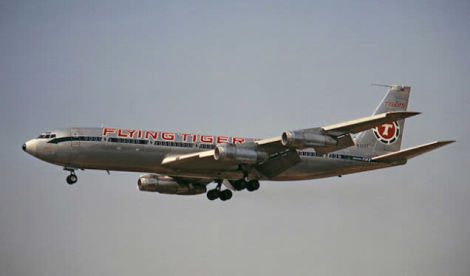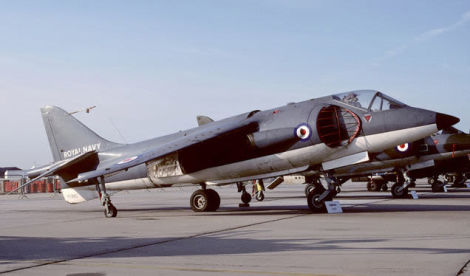Welcome to This Date in Aviation History, getting of you caught up on milestones, important historical events and people in aviation from November 17 through November 20.

November 17, 1956 – The first flight of the Dassault Mirage III. In the early years of the Cold War, before the advent of the intercontinental ballistic missile, defense against nuclear-armed bombers centered around the interceptor, an aircraft that sacrificed maneuverability in favor of straight line speed and high climb rates to destroy high-flying bombers before they could loose their nuclear payload. Beginning in 1952, the French government initiated the procurement of their own supersonic interceptor, one that would be capable of all-weather operations and be be capable of reaching 59,000 feet in just six minutes. This project led to the Mystère Delta, subsequently renamed the Dassault Mirage I, an all-delta-wing interceptor that was powered by two afterburning turbojets augmented with rockets that pushed it to Mach 1.6. However, due to the small size of the fighter, its armament was restricted to a single air-to-air missile and the project was eventually scrapped.
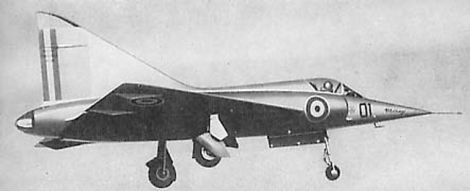
Dassault considered a larger version of this hybrid powered fighter, but that program was also abandoned in favor of a still larger interceptor, which would be called the Mirage III. The Mirage III was powered by a single SNECMA Atar 09C afterburning turbojet engine and, while provisions were also made for a rocket engine, this configuration was never put into production. The Mirage III’s fuselage was redesigned to take advantage of the area rule, and the interceptor reached Mach 1.52 on its tenth test flight. Later variants attained speeds exceeding Mach 2, making the Mirage III the first European aircraft to fly at twice the speed of sound. This variant was designated Mirage IIIA and led to an initial order for 10 aircraft. The Mirage IIIC, armed with two 30mm cannons, became the first production model, and had five external hardpoints for weapons and an aerodynamic centerline fuel tank that could also house a bomb. This version was subsequently developed into the Mirage IIIE which was specialized for ground attack, and the Mirage IIIR which took on a reconnaissance role.
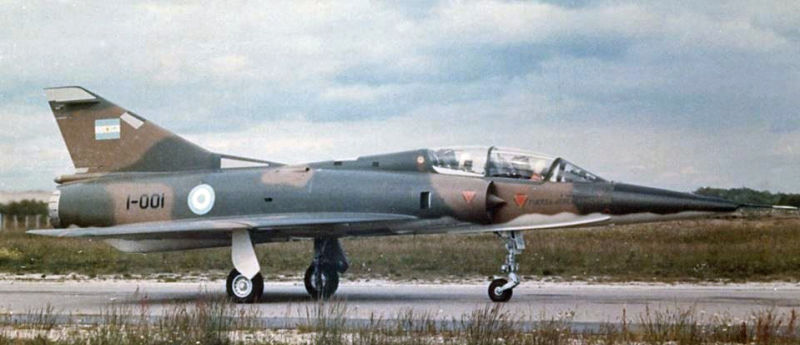
The Mirage III entered service in 1961 and, despite its original mission as an interceptor, it proved to be an excellent all-around fighter and attack aircraft. It was widely exported, and saw combat service with the Israeli Air Force (IAF) during the Six Day War and the Yom Kippur War, with the South African Air Force in the South African Border War, and with devastating effectiveness by the Argentine Air Force against British naval forces during the Falklands War. Numerous variants have also been produced, including the Mirage 5, which was eventually developed into the Kfir by the Israel Aircraft Industries. A total of 1,422 Mirage IIIs were produced, and the type remains in service with the Pakistan Air Force.
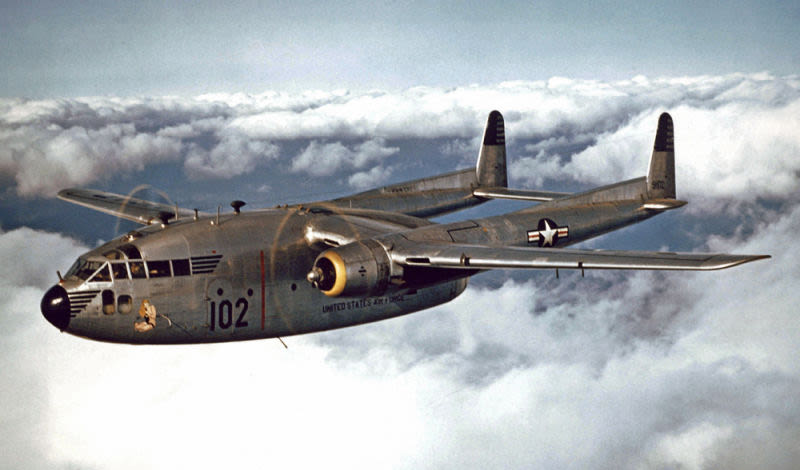
November 17, 1947 – The first flight of the Fairchild C-119 Flying Boxcar. World War II was the first war to be fought on a truly global scale, with major theaters of operations on opposite sides of the world in Europe and the Pacific, as well as North Africa. The geographical extent of the conflict required aerial resupply of armies on a scale that had never before been imagined, and nations that fought in both theaters were hard-pressed provide materiel to their troops with existing aircraft. For the most part, cargo aircraft of the time had been developed from passenger aircraft, and had no special design considerations for loading and unloading cargo, except for larger doors on the side of the fuselage and reinforced floors. What was desperately needed was a purpose-built aircraft designed specifically for handling heavy loads of cargo.
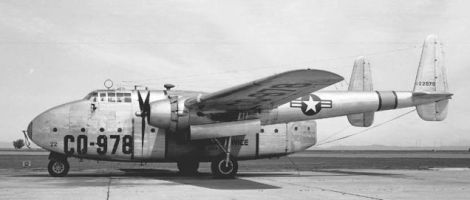
In 1944, Fairchild Aircraft developed the C-82 Packet, a cargo hauler that featured a large fuselage centered between a twin-boom tail. This arrangement allowed vehicles and supplies to be driven directly into the cargo hold, greatly simplifying and speeding up loading and unloading. The Packet entered service in June 1945, just one month before the end of the war, too late to make a significant contribution. Though the Packet also had some serious shortcomings, particularly with underpowered engines and a relatively flimsy airframe, the overall design concept showed great promise.

Based on their experience with the C-82, the Air Force asked Fairchild to develop a larger and more robust version of the Packet. Starting with the C-82 as a basis, Fairchild designed the C-119 with enlarged the fuselage and moved the cockpit fully forward, rather than on top of the fuselage, to make better use of the cargo space and, in a nod to both its shape and mission, the new aircraft received the nickname Flying Boxcar. Fairchild also gave the C-119 more powerful Pratt & Whitney R-4360 Wasp Major radial engines, the same engines that powered the Boeing B-50 Superfortress. In order to supplement Fairchild’s production of the C-119 and to provide aircraft in the large numbers, the Air Force awarded a contract in 1951 to industrialist Henry Kaiser to produce the Flying Boxcar in a factory at Willow Run Airport in Michigan where Consolidated B-24 Liberators had been built during the war. The only difference between the Kaiser C-119s and Fairchild’s was the use of the Wright R-3350 Duplex Cyclone engine, which had previously been used on the Boeing B-29 Superfortress. Kaiser constructed 71 of the almost 2,000 Flying Boxcars built, with the limited number most likely owing to political pressure from Fairchild over the loss of revenue.
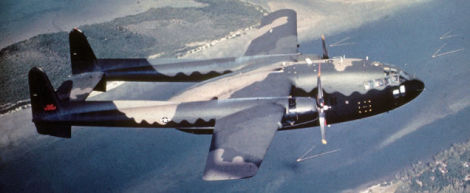
The Flying Boxcar entered service in 1949 and served with great distinction in Korea and Vietnam. A number of aircraft were converted to flying gunships with the addition of four GAU-2A 7.62mm mini guns and two M61 Vulcan 20mm Gatling cannons. This variant was designated the AC-119G Shadow and the AC-119K Stinger, and was used to complement the Lockheed AC-130 Spectre gunship. Others C-119s served in Europe and the Far East, and the Flying Boxcar was also used to snare film capsules ejected from early Corona spy satellites. Nearly 1,200 Flying Boxcars were produced from 1949-1955 and, after their removal from wartime duties, C-119s continued flying cargo and supply missions into the 1970s. The last operational C-119s were retired by the Republic of China Air Force in 1995.
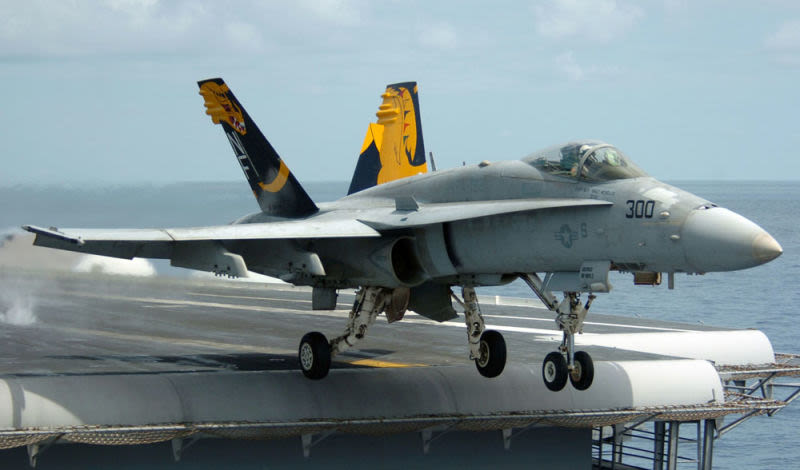
November 18, 1978 – The first flight of the McDonnell Douglas F/A-18 Hornet. In the 1970s, the US Navy faced a situation where they had an excellent fleet defense fighter in the Grumman F-14 Tomcat, but needed a new multi-role fighter to replace their aging fleet of McDonnell Douglas F-4 Phantom IIs and Douglas A-4 Skyhawks. However, developing a new fighter to fit their requirements was sure to be an enormously expensive endeavor at a time of congressional pressure to rein in defense spending. In an effort to reduce costs, Grumman offered a stripped down version of the F-14, and McDonnell Douglas suggested a naval variant of their F-15 Eagle. But to modify both aircraft would have cost roughly the same as developing a brand new aircraft. So the Navy turned its attention to the two fighters that had recently competed for the US Air Force Lightweight Fighter (LWF) contract, the General Dynamics YF-16 and the Northrop YF-17.

General Dynamics had won the Air Force contract, but the Navy felt that the F-16 would not make a suitable carrier fighter. Its landing gear was too narrow for operations from pitching carrier decks, and the Navy preferred multi-engine aircraft for added safety for long missions over open waters, and the F-16 had just a single engine. So, despite the Hornet having lost the LWF competition, the fighter offered features that were appealing to the Navy, and they decided to adopt a carrier-modified version of the YF-17, which became the F/A-18 Hornet. Northrop teamed with McDonnell Douglas, who had an extensive history of developing aircraft for the US Navy, and together they worked to make the unsuccessful Air Force fighter suitable for Navy carrier operations.
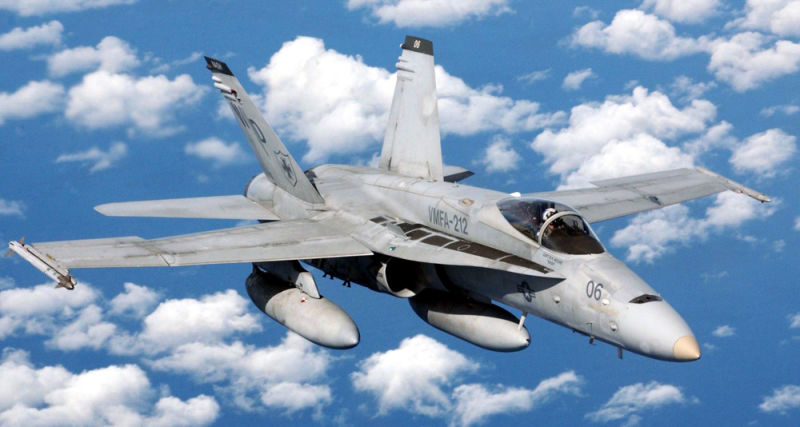
First, the airframe, undercarriage and tailhook were all strengthened, the landing gear was widened and given catapult attachments, and folding wingtips were fitted to allow for carrier storage. For long overwater missions, the fuel capacity was increased, giving the F/A-18 its distinctive dorsal hump, and additional fuel storage was added to the wings. The partial fly-by-wire system of the YF-17 was modernized and replaced by a quadruple-redundant, complete fly-by-wire system. And, where the F-14 was primarily an air superiority fighter, the Hornet was planned as a multirole fighter, and was given the prefix F/A to denote its dual role as fighter and ground attack aircraft.
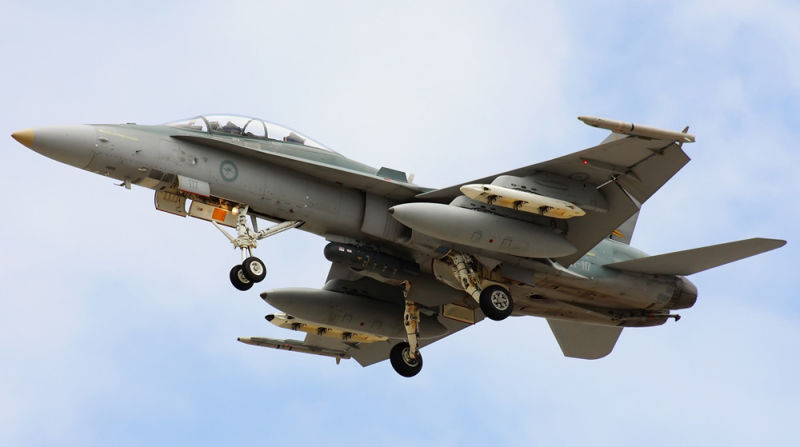
Production of the Hornet began in 1978, and the new fighter entered service with the Navy and Marine Corps in 1983. It wasn’t long before the Hornet began combat operations, taking part in action against Libya as part of Operation Prairie Fire and Operation El Dorado Canyon in 1986. When the Navy started phasing out the Grumman A-6 Intruder the 1990s, the Hornet took over the Intruder’s ground attack mission and, as a testament to its truly multirole design, it was not uncommon for Hornets to shoot down Iraqi aircraft and then drop bombs on ground targets during the same mission in the Gulf War of 1990. The Hornet has seen numerous upgrades during its service life, and almost 1,500 have been built for service with the Navy and Marine Corps, plus numerous export countries, and 138 CF-18 aircraft built for the Royal Canadian Fir Force. McDonnell Douglas used the F/A-18 as the basis for the larger and more advanced F/A-18E/F Super Hornet, but while it bears a strong resemblance to its predecessor, the Super Hornet is actually an entirely new aircraft, and not a true variant.
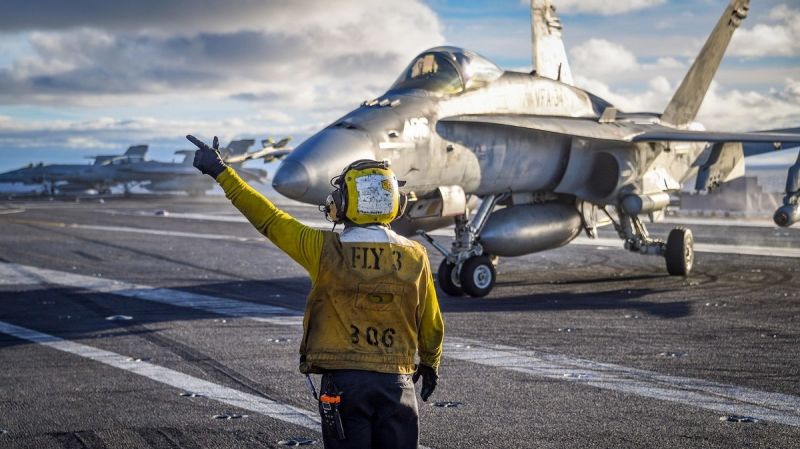
Thirty-five years after first entering service with the US Navy, the F/A-18A through F/A-18D models, the so-called Legacy Hornets, are being phased out of US Navy service. In April 2018, F/A-18s of VFA-34 “Blue Blasters” completed their final cruise aboard the carrier USS Carl Vinson (CVN 70) as the Navy works to transition completely to the Super Hornet. Most of the Legacy aircraft will be sent to the aviation boneyard in Arizona, where parts will used to support the remaining Legacy Hornets of the US Marine Corps. The US Navy Blue Angels demonstration squadron, which has been flying some of the oldest Hornets in the fleet, will also transition to the Super Hornet by 2021.
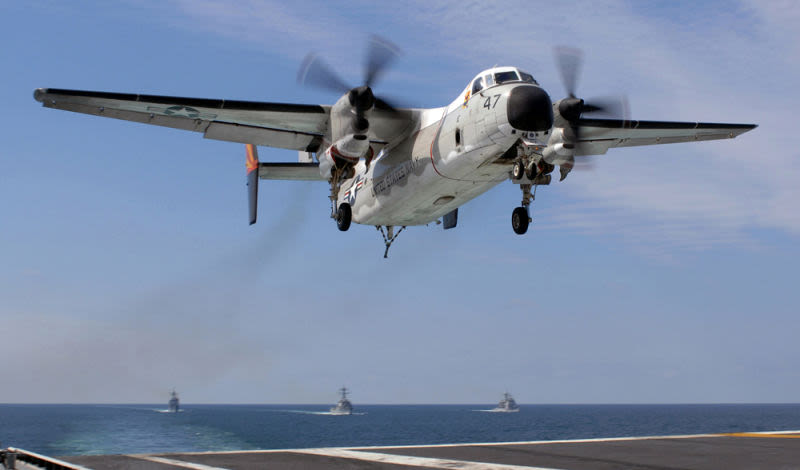
November 18, 1964 – The first flight of the Grumman C-2 Greyhound. To those who shipped or received packages in the days before the Internet, “COD” stood for “Collect On Delivery,” a now-outdated way to send a package and have the recipient pay for the shipping. But to the US Navy, “COD” means “Carrier Onboard Delivery,” and it is a vital means for an aircraft carrier and its battle group to receive mail, spare parts, personnel, or any other critical supplies by air, more quickly than can be done by underway replenishment ships. But in order to provide a useful cargo load, the COD airplane has to be big, because there are restrictions on the size of aircraft that can be operated safely from a carrier deck. In 1963, the Navy experimented with a Lockheed C-130 Hercules landing and taking off from the USS Forrestal. While those tests proved that the Herk could carry as much as 85,000 pounds and still land and take off, the Navy decided that it was just too risky and the project was abandoned. It was better to have a dedicated carrier aircraft perform the task.
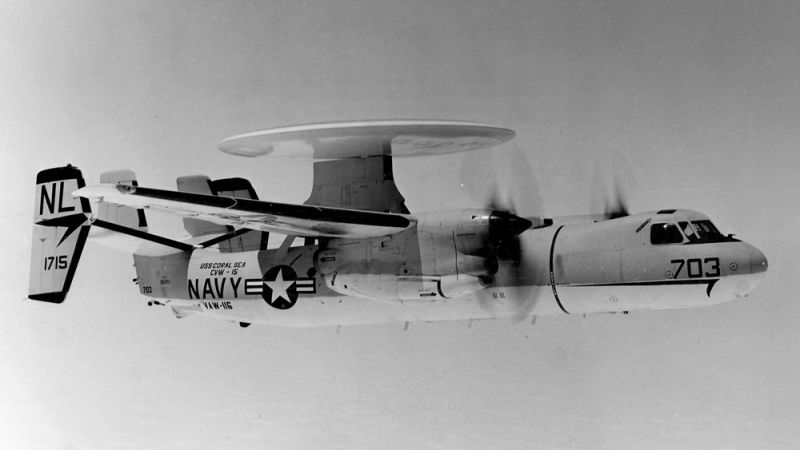
Before the advent of the Greyhound, COD had been carried out by the Grumman C-1 Trader, a variant of the Grumman S-2 Tracker, a piston-powered antisubmarine warfare (ASW) aircraft. But limitations in its payload and range meant that a more robust aircraft was needed. So the Navy turned to another large carrier aircraft they already had in their inventory, the Grumman E-2 Hawkeye, which began life as an airborne early warning (AEW) platform. By removing the radome, widening the fuselage and adding a rear cargo door, the Navy found just what it was looking for, and the new aircraft was designated the C-2 Greyhound. The Greyhound’s powerful Allison T56 turboprop engines provide the lifting muscle, and up to 10,000 pounds of cargo and/or passengers can be carried as far 1,500 miles.
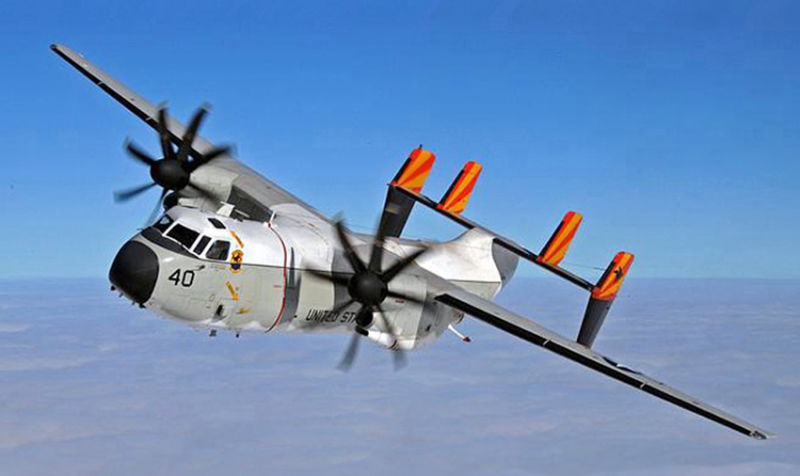
The C-2 proved to be a true workhorse, delivering two million pounds of cargo, two million pounds of precious mail, and 14,000 passengers during just two years of operations in Europe and the Mediterranean from 1985 to 1987. Greyhounds also flew during Operations Desert Shield and Desert Storm during the Gulf War, as well as Operation Enduring Freedom as part of the war in Afghanistan. However, despite its proven capabilities, the Greyhound’s days appear to be numbered. In 2015, the Navy decided on a controversial plan set to begin in 2021 to replace the C-2 with the Bell Boeing V-22 Osprey for all future COD missions, in spite of Grumman’s bid to modernize the fleet of Greyhounds. But the Osprey will not be able to carry the same weight of cargo, and it remains to be seen if the V-22 can offer the same stellar operational capabilities as its venerable predecessor.
Short Takeoff
November 17, 1965 – The first circumnavigation of the globe passing over the poles. Taking off from Honolulu, Hawaii on November 14 in a Boeing 707 (N322F) nicknamed Pole Cat and leased from Flying Tiger Line, a group of five pilots, three navigators and three flight engineers, led by Captains Fred Austin, Jr. and Harrison Finch, both retired TWA pilots, headed north and crossed the North Pole before a stop in London for fuel. After further stops in Lisbon and Buenos Aires, the crew circled the South Pole four times before a stop in Christchurch, New Zealand to refuel for the final leg back to Hawaii. The flight, which covered 26,230 miles and lasted 62.5 hours, was funded by Willard Rockwell, Sr., the founder of the Rockwell Corporation, who came along on the trip with 27 other passengers.
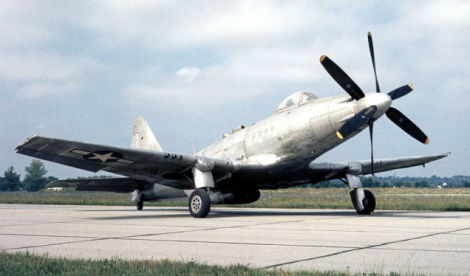
November 17, 1943 – The first flight of the Fisher P-75 Eagle, a high-altitude fighter developed for the US Army Air Forces by the Fisher Body Division of General Motors. The Eagle was cobbled together from the outer wing panels of a North American P-51 Mustang, the tail from a Douglas A-24 Banshee (the Army version of the Navy’s SBD Dauntless dive bomber), the undercarriage from a Vought F4U Corsair, and was powered by an Allison V-3420 24-cylinder engine placed behind the pilot. Problems in testing led to a redesign of the wings and tail, but the performance never met expectations, and the Army canceled the program in 1944. Thirteen were built, and the sole remaining aircraft is on display at the US Air Force Museum in Ohio.
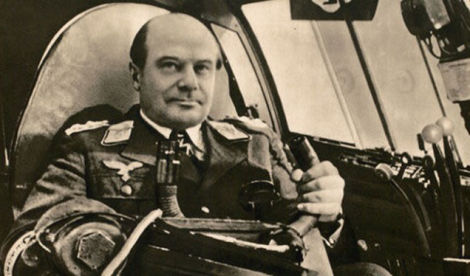
November 17, 1941 – The death of Ernst Udet, the second-highest scoring ace of WWI and the highest scoring ace to survive the Great War. Udet served under Manfred von Richthofen in Jagdgeschwader 1 (known as the Flying Circus) where he scored 62 confirmed victories. Following the war, Udet flew as a stunt pilot and barnstormer, then joined the Nazi Party in 1933 and was instrumental in the development of the Luftwaffe, particularly the dive bombing tactics used by the Junkers Ju 87 Stuka. Following the German loss of the Battle of Britain, Luftwaffe chief Hermann Göring led Hitler to believe that the loss was Udet’s fault, and Udet committed suicide on November 17, 1941.
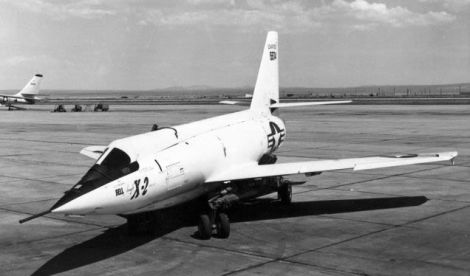
November 18, 1955 – The first flight of the Bell X-2, a joint project between Bell Aircraft, the US Air Force and the National Advisory Committee for Aeronautics (NACA) to produce a rocket-powered aircraft to explore flight characteristics between Mach 2 and Mach 3. Nicknamed Skybuster, a name seldom used officially, the X-2 was carried aloft by a Boeing B-50 Superfortress mother ship, and the two X-2s completed 20 test flights before the program ended in 1956. Aircraft No. 2 was lost along with test pilot Jean “Skip” Ziegler on June 27, 1952 after an inflight explosion while still attached to the B-50. Tests continued with aircraft No. 1 and, September 27, 1956, pilot Milburn G. “Mell” Apt became the first person to exceed Mach 3, but he lost control of the aircraft and was killed in the ensuing crash.
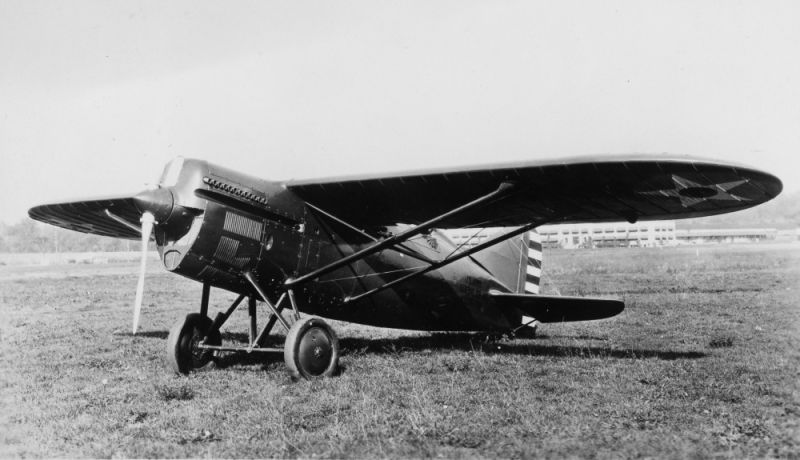
November 18, 1930 – The first flight of the Boeing XP-9, a high-wing monoplane fighter designed to fulfill a request from the US Army. Though only a single prototype was built, the XP-9 was a pioneer in the use of semi-monocoque construction where a portion of the loads on the aircraft are carried by its outer skin rather than by a rigid internal substructure or external bracing. The construction set the standard for future aircraft design, and design elements on the XP-9 were transferred to the more successful P-12 biplane. But the XP-9 proved to be unstable in flight and, despite modifications, the aircraft was retired after only 15 hours of flight testing.
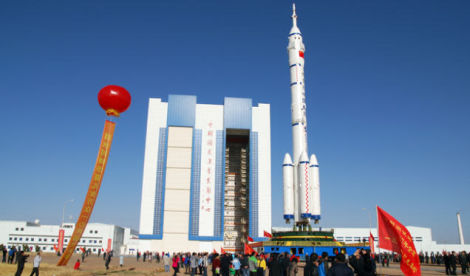
November 19, 1999 – The launch of Shenzhou 1, the first launch as part of China’s efforts to develop a manned space program. The unmanned Shenzhou 1 was used mainly as a test for the Long March 2F rocket that would lift future missions into space and, as such, the crew capsule was equipped with minimal systems and did not include any life-support equipment for future crews. The Shenzhou 1 completed 14 orbits of the Earth before re-entering the atmosphere and landing in Mongolia. China’s first manned mission, Shenzhou 5, took place on October 15, 2003.
November 19, 1960 – The first flight of the Hawker Siddeley P.1127. Following the development of the Pegasus ducted fan engine by the Bristol Engine Company, Hawker Siddeley decided to use the new engine to create a V/STOL aircraft to fulfill a NATO specification for a light tactical fighter. With funding and technical assistance from the US, six P.1127 prototypes were built. The P.1127 was subsequently developed into the Kestrel FGA and finally the Harrier Jump Jet, which entered service in 1969.
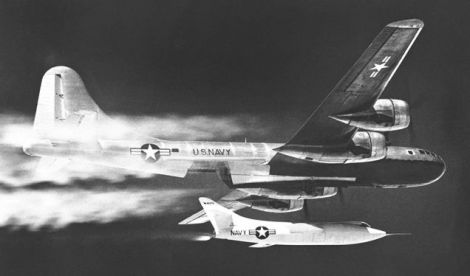
November 20, 1953 – The Douglas Skyrocket exceeds Mach 2. The Skyrocket was a Navy-funded project to construct a jet- and rocket-powered aircraft to explore supersonic flight. The D-588-2 was the second in a planned series of three aircraft that was to culminate in the mockup of an actual fighter, though that aircraft was never built. Douglas built three Skyrockets which combined to fly a total of 313 test missions, and the record-breaking flight by test pilot Scott Crossfield marked the first time that anybody had exceeded Mach 2 in a piloted aircraft. The final mission of the Skyrocket was flown in August of 1956, and the program gathered important data and understanding about stable, controlled flight of swept-wing aircraft at both transonic and supersonic speeds.
Connecting Flights
If you enjoy these Aviation History posts, please let me know in the comments. And if you missed any of the past articles, you can find them all at Planelopnik History. You can also find more stories about aviation, aviators and airplane oddities at Wingspan.
